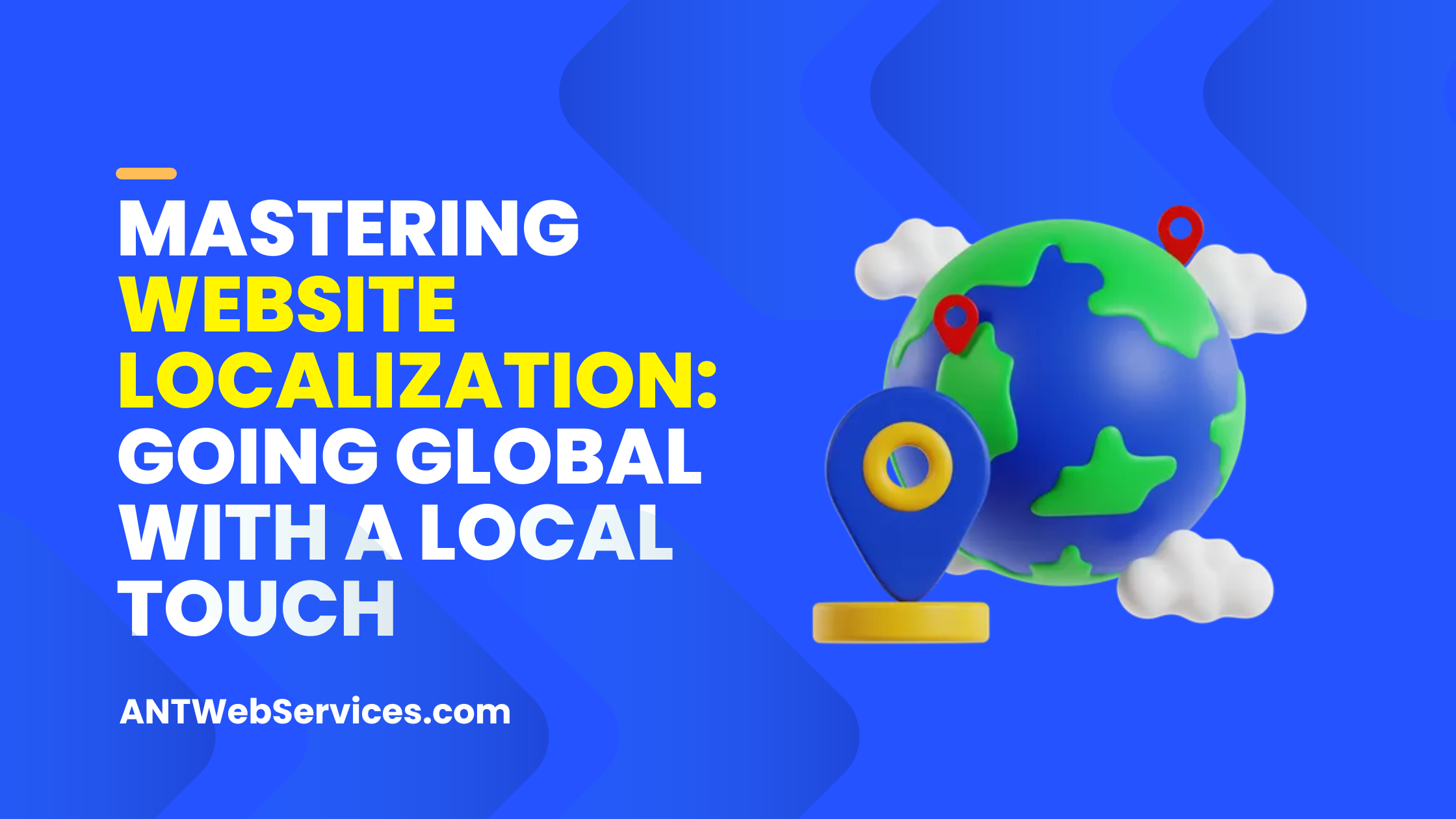Website localization isn’t just about translating words. It’s about creating tailored versions of your online presence that resonate with different markets. It’s like throwing a party where you speak the language of your guests, serve their favorite snacks, and play their favorite tunes. In this digital age, website localization extends far beyond mere words – it encompasses everything from logos and products to branding, and even content like TV shows and games. It’s the art of adapting your digital space to make it feel right at home for your international audience. So, grab your passport, and let’s embark on a journey into the world of website localization!

What is Website Localization, Anyway?
Before we dive into the nitty-gritty details, let’s get one thing straight: Website localization is not just about translation. Sure, translating your website’s content into different languages is a significant part of it, but it goes way beyond that. Localization is about adapting your website to the unique needs, preferences, and cultural nuances of your target audience.
The Global Meets the Local: Glocalization
Picture this: You’re a global brand, and you want to conquer new markets while maintaining your global identity. Enter glocalization. This strategy combines the best of both worlds – global and local. It’s like having a cup of coffee that tastes the same no matter where you are in the world, but with a local twist. Glocalization allows you to retain your brand’s essence while catering to the specific tastes and expectations of different regions.
Why is Website Localization Important?
Now that we have a grasp of what website localization is, let’s talk about why it’s crucial for your online presence. There are several compelling reasons to invest in website localization:
1. International Appeal

Think of your website as a storefront on the bustling streets of the internet. Localization makes your storefront look inviting and accessible to people from all over the world. It’s like putting up a neon sign that says, “Come on in, we speak your language!”
2. Enhancing User Experience

User experience (UX) is everything in the digital realm. When you localize your website, you’re not just translating words; you’re tailoring the entire user journey. It’s like designing a theme park with rides and attractions that cater to the interests of each visitor. A well-localized website ensures that users can navigate effortlessly, understand your content, and find what they’re looking for.
3. Boosting SEO

Ah, SEO – the magical key to appearing on the first page of Google search results. When you localize your website, you’re not only speaking your audience’s language but also Google’s language. It’s like having a conversation with Google and saying, “Hey, we’re relevant to these markets, too!” This can lead to higher search engine rankings, more organic traffic, and ultimately, more conversions.
4. Payment Options That Work

Different regions have different preferred payment methods. While credit cards are the go-to option in some places, others prefer digital wallets or even cash on delivery. Localization includes making sure your payment gateways align with the expectations of your target audience. It’s like having the right currency in your wallet when you’re traveling abroad – it makes transactions smooth and hassle-free.
The Cost of Going Global
While the benefits of website localization are undeniable, it’s essential to address the elephant in the room – the cost. Yes, localization can be an investment, but it’s one that can yield significant returns if done right. Before you embark on your localization journey, here are some factors to consider:
1. Assess User Interaction
Start by analyzing how users from different regions interact with your website. What are their preferences? What content resonates with them the most? Understanding user behavior is like having a treasure map that guides you to the most valuable localization opportunities.
2. Identify Your Target Markets
Not every market is the same, and not every market is right for your business. Identify the regions where your products or services have the most potential. It’s like choosing the perfect spot to set up a beachside ice cream stand – you want to be where the sun (and customers) shine the brightest.
3. Consider Cultural Associations
Different cultures have different symbols, colors, and meanings attached to them. Localization involves being aware of these cultural nuances and making sure your website doesn’t inadvertently offend or confuse your audience. It’s like knowing which hand gestures are polite and which are offensive when traveling to a foreign country.
4. Analyze Your Competitors
Your competitors can provide valuable insights into what works and what doesn’t in specific markets. Study their localized websites and learn from their successes and mistakes. It’s like having a friendly race with your competitors – you want to cross the finish line first, but you’re also keeping an eye on their strategies.
5. Professional Translation is Non-Negotiable
When it comes to translation, don’t cut corners. Machine translations may save you some money, but they can lead to embarrassing and costly mistakes. Invest in professional translators who understand not just the language but also the culture and context. It’s like having a skilled tour guide who can help you navigate unfamiliar territory without getting lost.
6. Optimize for Local Internet Speeds
In some regions, internet speeds can be slower than what you’re used to. Make sure your website loads quickly, even on slower connections. It’s like making sure your car has good mileage when embarking on a road trip – you don’t want to run out of gas before reaching your destination.
7. Secure Payment Gateways
Security is paramount, especially when it comes to online transactions. Ensure that your payment gateways are secure and comply with the standards of the regions you’re targeting. It’s like having a vault with multiple locks to protect your treasure – you want your customers to feel confident when making purchases on your website.
8. Set a Budget
Localization can be costly, so it’s essential to set a budget from the get-go. Determine how much you’re willing to invest in each market and prioritize accordingly. It’s like planning your travel expenses – you want to make the most of your journey without breaking the bank.
In conclusion,
Website localization is the key to unlocking international markets while maintaining a local touch. It’s like speaking the language of your customers, both figuratively and literally. By tailoring your online presence to the unique needs and preferences of different regions, you can enhance user experience, boost your SEO rankings, and ultimately drive conversions. Yes, it can be costly, but with careful planning and a focus on the right markets, the rewards far outweigh the investment.
Frequently Asked Questions
No, website localization goes beyond translation. It involves adapting your website to the cultural nuances and preferences of different regions, including language, design, and content.
Glocalization is a strategy that combines global and local elements to maintain a global brand identity while catering to the specific needs of different regions. It’s important because it allows you to expand internationally while making your brand feel local.
Website localization can boost your SEO rankings by making your website more relevant to different regions and languages. Google rewards websites that provide a tailored user experience.
Common mistakes include using machine translations, neglecting cultural nuances, and not optimizing for local internet speeds. It’s essential to invest in professional translation and consider local factors.
Start by assessing user interaction on your website and identifying regions with the most potential. Consider cultural associations, analyze competitors, and prioritize markets based on your budget and goals.




